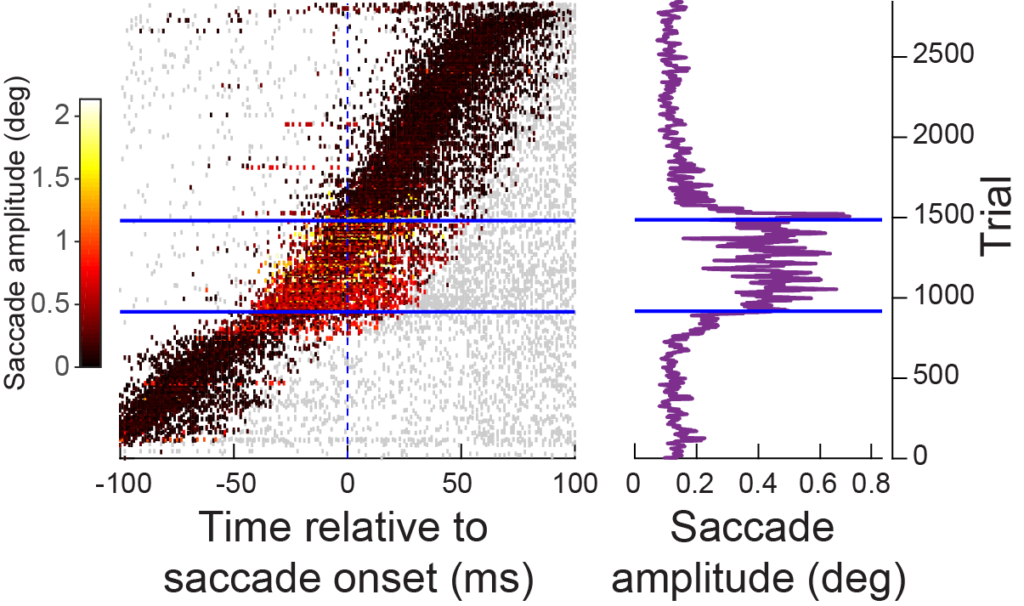
We have a new paper published at eLife, led by Antimo Buonocore, Xiaoguang Tian, and Fatemeh Khademi. In this study, we showed that at the time of triggering for a saccadic eye movement, any neural action potential in the superior colliculus (SC), regardless of what is causing this action potential, modifies the movement trajectory. Therefore, movement-unrelated neural activity, when it comes at the opportune time, is sufficient to alter ongoing eye movements. This is contrary to early classic views that saccadic eye movements are ballistic and unmodifiable.
Most importantly, we found that the impact of individual spiking activity on any given eye movement trajectory was lawful: every spike of any given active neuron linearly added to the movement amplitude.
These results are important for understanding how the SC is read-out by other brain structures to implement saccades. Moreover, these results help move our studies towards understanding more naturalistic scenarios in which unexpected visual events in the environment can happen at any time relative to our own ongoing self-generated movements.
The paper can be read here. And, to understand how this new study fits in our broader research program, please also read this paper.

